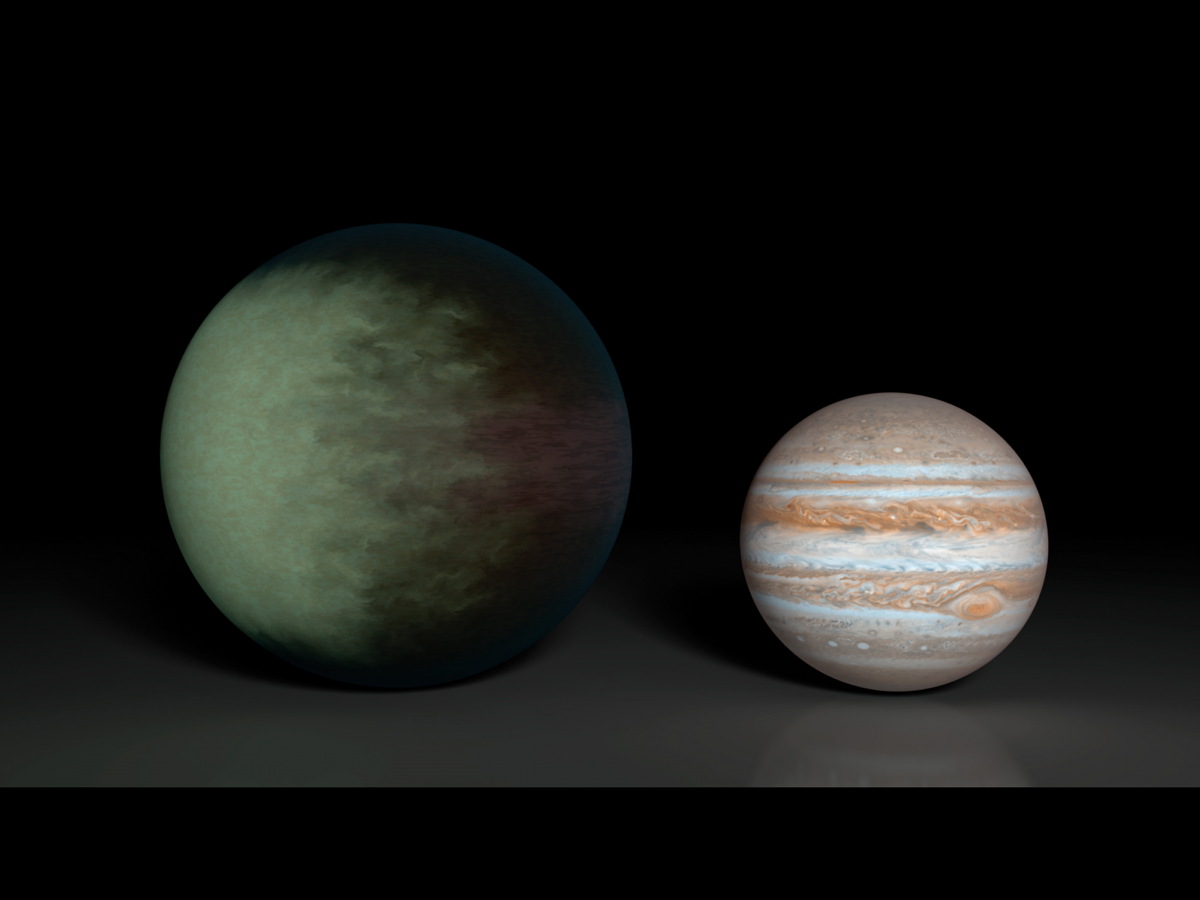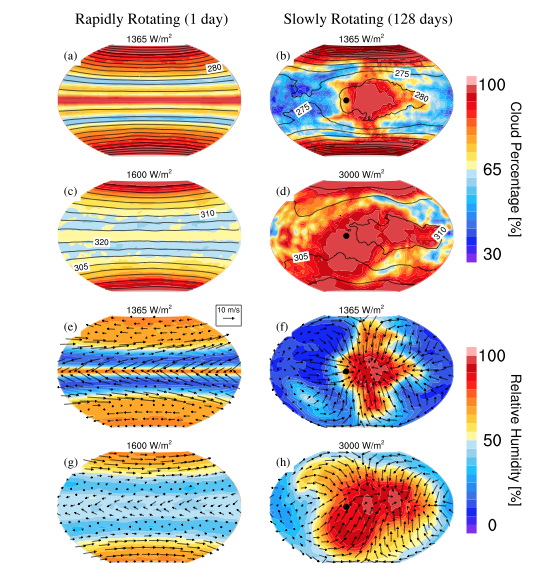On Cloudy Alien Planets, a Chance for Life

The cloudier an alien planet is, the closer it can get to its star and still remain potentially life-friendly, researchers say.
In fact, clouds might help Earth-like planets remain hospitable to life even when orbiting a sun-like star as closely as the hellish Venus circles the sun in our solar system, the scientists added.
This finding suggests that many alien worlds previously thought to be too hot for life as we know it may actually be habitable, investigators said. [10 Alien Planets That Could Support Life]
Astronomers have confirmed the existence of more than 1,700 worlds beyond the solar system in the past 20 years, and may soon prove the existence of thousands more such exoplanets. Of key interest are exoplanets in habitable, or Goldilocks, zones, the regions around stars just warm enough to possess liquid water on their surfaces, as there is life virtually wherever liquid water is found on Earth.
Habitable alien planets
The distance at which a planet orbits its star is one factor behind how much light from the star heats up that world's surface. Another factor controlling how much energy a planet gets from its star are clouds in that world's atmosphere, which can reflect light away from a world and cool it down — for instance, clouds account for most of the sunlight reflected away from Earth. [Habitable Zones for Alien Planets Explained (Infographic)]
Now scientists find that on planets that rotate much slower than Earth, clouds form that can help those worlds maintain Earth-like climates, even when they receive levels of light from their stars that would make Earth uninhabitable for life as we know it.
The amount of clouds a planet has and where these clouds are located on that world are primarily controlled by how its atmosphere circulates. This in turn is determined in part by how slowly that planet spins. For instance, the more slowly a planet rotates, the longer both its days and nights are — this increases the difference in temperature between the day and night sides, and to even out this imbalance, the atmosphere will circulate more.
Get the Space.com Newsletter
Breaking space news, the latest updates on rocket launches, skywatching events and more!
In addition, when a planet spins, masses of air on its surface will rotate as well, a phenomenon known as the Coriolis effect that influences how powerfully major wind patterns such as hurricanes whirl. The faster a world spins, the stronger the Coriolis effect, and the more the atmosphere will separate into multiple bands running parallel to the equator in which the winds circulate in distinct patterns. The slower a planet whirls, the weaker the Coriolis effect, and the less divided the atmosphere will be into distinct regions.
Cloudy with a chance of life?
To investigate the effects of a planet's rotation on its habitability, scientists investigated how three-dimensional models of atmospheric circulation behaved on computer-simulated planets with the same mass and diameter as the Earth. These virtual worlds had rotation speeds ranging from twice as fast as Earth's to 365 times slower than Earth's, and received from about 0.25 to 2.5 times as much light from their stars as Earth does.
On Earth, cloud formation begins when heat from the sun causes water to evaporate. As this invisible water vapor rises, it cools and condenses into clouds of visible water droplets or ice crystals.
The scientists found that on what they considered rapidly rotating planets — ones that rotated about as fast as Earth — the atmosphere broke up into distinct bands, and clouds behaved much like they do on Earth. The habitable zones of these rapidly rotating worlds matched previous calculations for planets in general.
However, slowly rotating planets — ones that spin 100 times slower than Earth or more — had significantly wider habitable zones. They could maintain Earth-like climates even when receiving nearly twice as much light as rapidly rotating planets.
The scientists explained that on slowly rotating planets, the area on the planet that faces its star — the "substellar point" — gets heated for a long time. This causes air to rise from the substellar point.
"Clouds tend to form where air rises because moist warm air is cooled, leading to condensation," said study co-author Dorian Abbot, a geophysicist at the University of Chicago.
Without a strong Coriolis effect to break up atmospheric circulation into distinct bands, more clouds form. At the substellar point, the researchers found cloud cover would be present 90 percent or more of the time, reflecting a significant amount of light away from the planet, Abbot said.

Venus-like planets and life
Intriguingly, "the model finds a habitable climate for a planet with Earth's atmosphere in Venus' orbit with Venus' rotation rate because of increased cloud cover," Abbot told Space.com. In comparison, Venus rotates more than 240 times slower than Earth, and orbits the sun at a distance of less than three-quarters of an astronomical unit (AU), the average distance from Earth to the sun, where it receives nearly twice as much light from the sun as Earth.
However, Venus is a hellish planet that is definitely not habitable. Temperatures on Venus reach 870 degrees F (465 degrees C), more than hot enough to melt lead. This makes the surface of Venus extremely dry — there is no liquid water on its surface because the scorching heat would cause any to boil away. The researchers suggest that Venus once rotated more rapidly, at a rate only about 10 to 100 times slower than Earth's, which helped make it uninhabitable.
The researchers suggest their findings should be checked with other climate models and with more sophisticated cloud models. They detailed their findings in the April 25 edition of the Astrophysical Journal Letters.
Follow us @Spacedotcom, Facebook and Google+. Original article on Space.com.
Join our Space Forums to keep talking space on the latest missions, night sky and more! And if you have a news tip, correction or comment, let us know at: community@space.com.

Charles Q. Choi is a contributing writer for Space.com and Live Science. He covers all things human origins and astronomy as well as physics, animals and general science topics. Charles has a Master of Arts degree from the University of Missouri-Columbia, School of Journalism and a Bachelor of Arts degree from the University of South Florida. Charles has visited every continent on Earth, drinking rancid yak butter tea in Lhasa, snorkeling with sea lions in the Galapagos and even climbing an iceberg in Antarctica. Visit him at http://www.sciwriter.us









